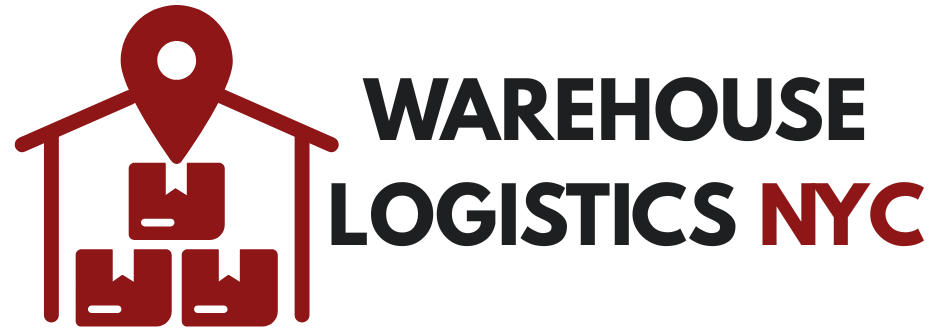Table of Contents
Key Takeaways





A warehouse system is the backbone of modern logistics—powering everything from real-time inventory control to seamless order fulfillment. Without one, warehouses risk costly delays, errors, and inefficiencies. Whether you’re managing a small operation or a global distribution center, choosing the right warehouse management system (WMS) can transform how your business functions. In this guide, we’ll explore six top warehouse management system examples, how they work, and which system best fits your operational goals.
4 Types of Warehouse Management Systems
Different businesses require different warehouse management system types. Choosing the right one depends on your scale, budget, and level of integration needed.
1. Standalone WMS
A standalone warehouse management system is ideal for small to medium-sized operations. It focuses solely on core warehouse functions such as receiving, picking, and shipping, without heavy ERP integration.
2. ERP-Integrated WMS
An ERP-integrated system merges warehouse operations with enterprise planning tools—offering a unified platform for finance, HR, and logistics. It’s perfect for large companies needing seamless cross-department coordination.
3. Cloud-Based WMS
A cloud-based WMS provides flexibility and scalability. It allows managers to access real-time warehouse data from any device, ensuring continuity across multiple locations without heavy IT investment.
4. Open-Source or Custom WMS
An open-source or custom WMS gives businesses the freedom to modify and adapt features. It’s cost-effective long-term but requires technical expertise to implement and maintain.

6 Warehouse Management System Examples
Each warehouse system below highlights how technology shapes operational excellence.
1. SAP Extended Warehouse Management (SAP EWM)
SAP EWM is known for its robust automation capabilities and advanced analytics. It helps enterprises manage complex warehouse networks and optimize inventory movement with precision.
2. Manhattan Associates WMS
This system is renowned for AI-driven insights and scalable architecture. It’s designed for high-volume operations requiring speed, accuracy, and real-time visibility across multiple facilities.
3. Oracle Warehouse Management Cloud (WMC)
Oracle WMC is a cloud-native WMS that enhances flexibility and integration. It supports global operations, providing instant visibility and powerful automation for order accuracy and fulfillment speed.
4. Blue Yonder (JDA) WMS
Blue Yonder combines artificial intelligence with predictive analytics, allowing proactive decision-making. Its machine learning features make it ideal for complex, data-driven logistics environments.
5. Fishbowl Warehouse
Fishbowl is a leading option for small to midsize businesses. It integrates seamlessly with QuickBooks, making inventory and order management simple yet powerful without enterprise-level costs.
6. Infor WMS
Infor’s cloud-based WMS offers a clean interface, strong compliance tools, and advanced analytics. It’s built for adaptability—ideal for businesses managing multiple warehouses or evolving product lines.
Quick Facts: Warehouse Systems at a Glance
Fact | Insight |
1 | 86% of warehouses plan to invest in WMS software by 2026. |
2 | Cloud-based WMS adoption has grown by 30% in the past three years. |
3 | Companies using automation reduce warehouse costs by up to 25%. |
4 | Real-time tracking increases inventory accuracy by 99%. |
5 | AI-driven systems like Manhattan WMS improve picking speed by 20%. |

How to Choose the Right WMS Management System for Your Business
Selecting a WMS management system starts with identifying your operational needs. Small businesses may prioritize cost and ease of use, while larger enterprises need scalability and deep integration with existing systems.
Key factors to evaluate include:
- Scalability: Can it grow with your business?
- Integration: Does it connect with your ERP, CRM, and shipping tools?
- Automation capabilities: How much manual work can it replace?
- Support and updates: Are vendor services reliable and ongoing?
Warehouse Logistics By Best helps businesses navigate these decisions, providing expertise in system selection, setup, and long-term optimization.
4 Benefits of Implementing a Warehouse Management System
1. Improved Inventory Accuracy
A warehouse management system gives you full control and visibility over your inventory in real time. By automating data capture through barcodes, RFID, or scanners, businesses can dramatically reduce discrepancies between recorded and actual stock.
This minimizes costly stockouts and overstocks, ensuring products are always available when and where they’re needed. Accurate inventory data also enables smarter purchasing decisions, tighter cost control, and better forecasting—all essential for maintaining a lean, efficient operation.
2. Faster Order Fulfillment and Reduced Errors
Speed and accuracy are critical in modern logistics. A WMS management system streamlines every stage of order processing—from picking and packing to shipping—by guiding warehouse staff through optimized workflows. Automation reduces manual data entry and helps prevent mistakes like mispicks or duplicate shipments.
The result: faster cycle times, lower labor costs, and a dramatic drop in fulfillment errors. In competitive markets where next-day delivery is the norm, these gains can significantly boost customer loyalty and profitability.
3. Real-Time Insights and Data-Driven Decisions
One of the most powerful benefits of implementing a warehouse management system is its ability to provide actionable data. With real-time dashboards and analytics, managers can monitor key performance metrics such as order accuracy, labor efficiency, and space utilization.
This visibility helps identify bottlenecks, forecast demand, and optimize staffing. Instead of reacting to problems after they occur, businesses can make proactive, data-backed decisions that enhance productivity and reduce operational costs.
4. Enhanced Customer Satisfaction
Customer satisfaction starts with reliability—and a warehouse system ensures orders are processed accurately and delivered on time. When inventory is properly tracked and fulfillment workflows are optimized, customers receive exactly what they ordered, faster. This consistency strengthens trust and encourages repeat business.
Additionally, having a WMS allows for faster issue resolution and improved communication with customers about order status, leading to a smoother, more transparent buying experience. In short, a warehouse management system doesn’t just benefit internal operations—it directly elevates the customer experience.

3 Common Challenges in Using Warehouse Systems
1. Integration with Existing Tools
Integrating a new warehouse management system with your existing software—such as ERP, CRM, or transportation management systems—can be one of the most difficult steps in implementation. Each system has unique data formats and workflows, making synchronization a technical challenge. Without proper integration, you risk data silos, duplicate entries, and workflow disruptions.
However, successful integration allows seamless data exchange between systems, enabling real-time visibility across your entire supply chain. Businesses that plan this process carefully—often with support from experienced WMS consultants—can ensure their warehouse system works harmoniously with existing tools to deliver full operational efficiency.
2. Data Migration and Staff Training
Transitioning from a legacy platform or manual process to a new WMS management system involves transferring large volumes of inventory data, supplier details, and order histories. Data migration errors can lead to missing or inaccurate information, which disrupts operations and delays ROI. To mitigate these risks, it’s crucial to validate data before and after migration, conduct test runs, and use phased rollouts instead of abrupt transitions.
Equally important is staff training. A warehouse management system is only as effective as the people using it. Comprehensive onboarding and hands-on training sessions ensure employees understand how to navigate the system, follow automated workflows, and troubleshoot minor issues. When your team feels confident in using the software, productivity rises and errors decrease dramatically.
3. Maintaining Scalability and System Updates
As your business expands, your warehouse management system must scale to handle higher order volumes, additional warehouse locations, and evolving customer expectations. Some systems, particularly older or on-premise solutions, struggle to keep pace with growing operational demands. This can lead to slowdowns, system crashes, or outdated reporting tools that limit performance.
Regular updates are also critical to maintaining security and functionality. Vendors continuously release patches and upgrades that improve automation features, fix bugs, and enhance cybersecurity. Cloud-based warehouse management system software often simplifies this process, automatically rolling out updates without disrupting operations. Staying proactive about scalability and system maintenance ensures your warehouse continues running smoothly, efficiently, and securely as it grows.
Frequently Asked Questions About Understanding Warehouse Management Systems
What is a warehouse management system, and why is it important?
A warehouse management system (WMS) streamlines warehouse processes, improving accuracy, reducing costs, and enhancing visibility across the supply chain.
What are the main types of warehouse management systems?
The main warehouse management system types are standalone, ERP-integrated, cloud-based, and open-source.
Can small businesses benefit from WMS software?
Yes, small businesses can use cost-effective warehouse management system software like Fishbowl or cloud-based options to improve productivity.
What are some examples of warehouse management systems used today?
Examples include SAP EWM, Oracle WMC, Blue Yonder, Manhattan WMS, Infor WMS, and Fishbowl Warehouse.
How does a WMS management system improve supply chain efficiency?
It automates inventory, accelerates order fulfillment, and enhances visibility, allowing better decisions across your warehouse system.

Partner With Warehouse Logistics By Best to Optimize Your Warehouse System
A well-chosen warehouse system can transform your logistics performance. At Warehouse Logistics By Best, our experts help you identify, implement, and optimize a WMS that fits your unique business model. Take control of your operations, reduce inefficiencies, and deliver excellence from storage to shipment.
Contact Warehouse Logistics By Best today to start optimizing your warehouse system and streamlining your logistics future.

